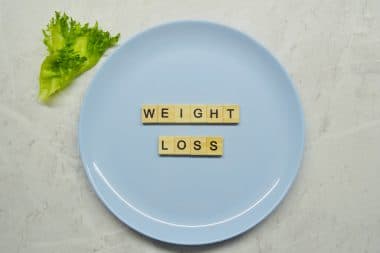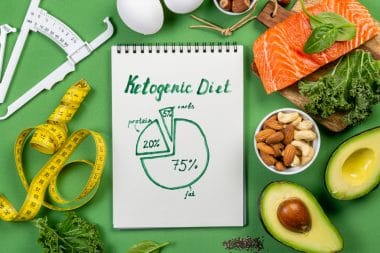Dieting has always been the most efficient means to lose weight and to maintain a healthy lifestyle that will keep the weight off after. However, it is also one of the most dreaded tasks for most human beings. In fact, approximately 62% of Americans begin a diet each year, but most of them are deemed unsuccessful, due to the fact that they are often plain difficult. Most of this stems from a lack of understanding when it comes to matters of portion control or the right foods to eat. Some believe that certain fruits must be avoided simply because of the fructose, but fail to understand that they are missing out on not only a tasty snack, but one packed full of nutrients that will further benefit their diet. Even if you do not consider yourself a dieter, it is still important to understand the appropriate serving size of certain fruits and vegetables, their calories, and the general benefits of eating them.
Nutritional information tends to be based on a 2,000 calorie a day diet, so if you ever need assistance in determining which amounts are appropriate for your weight and level of exercise, try one of these handy calculators.
Popular Fruits and Vegetables: Serving Sizes, Calories, Fats, Carbohydrates, and Proteins
Watermelon
One of the most popular summer fruits is a juicy watermelon. People believe that watermelon is immeasurable because it is mostly water, and while it is high in water content, it still has calories, some fat and, certainly, carbohydrates.
Serving Size: 100 grams, 1 cup of watermelon balls, 1 wedge, or 10 balls
Calories: 85
Total Fat: 0.4 grams, which composes 0% of your daily diet.
Saturated: 0 grams
Polyunsaturated: 0.1 grams
Monounsaturated: 0.1 grams
Total Carbohydrates: 21 grams, which makes up 7% of your daily intake.
Dietary Fiber: 1.1 grams
Sugar: 17 grams
Protein: 1.7 grams, which is 3% of your daily intake.
Watermelon is rich in Vitamins A, C, D, B-12, and B-6. Small traces of iron and calcium exist in this fruit, too.
Grapes
Serving Size: 1 cup or 100 grams
Calories: 62
Total Fat: 0.3 grams, making up 0% of your daily intake.
Polyunsaturated: 0.1 grams
Total Carbs: 16 grams, which composes 5% of a daily intake.
Dietary Fiber: 0.8 grams
Sugar: 15 grams
Protein: 0.6 grams, making up 1% of a daily intake.
Grapes come in different variations, including the typical red and green favorites. While there is no difference in nutrition among these, there is a difference in globe grapes; a half of cup shares the same nutritional value of 1 cup of traditional grapes.
Apples
This is a fruit that comes in a multitude of varieties, including Red Delicious, Macintosh, and green Granny Smith. They do vary in nutrition. A standard, red apple has the following statistics:
Serving Size: 1 medium apple
Calories: 95
Total Fat: 0.3 grams, composing 0% of a daily intake.
Polyunsaturated: 0.1 grams
Monounsaturated: 0.1 grams
Total Carbs: 25 grams, 8% of a daily intake.
Dietary Fiber: 4.4 grams
Sugar: 19 grams
Protein: 0.5 grams, composing 1% of an intake.
Granny Smith apples tend to have only 80 calories, 0 grams of fat, and 22 grams of carbs.
Bananas
The calories and carbs found in bananas deter most from enjoying them, but the benefits of sinking your teeth into a perfect banana are endless, as they are high in vitamins C and B-6. They are also rich in magnesium and have a surprising amount of protein. They are also referred to as plantains. However, plantains differ greatly in calories, and contain 218 per 179 grams.
Serving Size: 1 medium banana (118 grams)
Calories: 105
Total Fat: 0.4 grams, 0% daily intake.
Saturated: 0.1 grams
Total Carbs: 27 grams, composing 9% daily intake, with only 14 grams of sugar.
Protein: 1.3 grams, making up a 2% intake.
Pears
This is a fruit often referred to as a superfood, as they are rich in vitamins C, B-6, and B-12. They are nearly 90% water, which makes them ideal for both a tasty snack and as a means for adequate hydration.
Serving Size: 178 grams, or one medium pear
Calories: 100
Total Fat: 0.2, composing 0% of a daily intake, with 0% of it being unsaturated.
Total Carbs: 26 grams with 17 grams of sugar. This makes up 9% of the daily amount.
Protein: 0.6 grams, which stands at 1% for the day.
Orange
If you are sick, it is recommended to eat an orange or to drink a glass of its juice, due to the fact that this is a fruit that contains 85% of vitamin C. Though their natural benefits would outweigh them regardless, oranges are fairly low in carbs. There are variations of oranges, including mandarins, valencias, and tangelos. Differing in size, they vary slightly in nutrition, but not immensely.
Serving Size: 96 grams
Calories: 45
Total Fat: 0 grams, and 0% daily value. This includes saturated and unsaturated fats.
Total Carbs: 11 grams, 9 of which are sugar; 3% of the recommended amount.
Protein: 0.9 grams, 1% daily value.
Pineapple
Pineapples rival oranges in terms of vitamin C, and offer 67% per slice. This tropical snack is among the lowest in carbs–making it virtually guilt-free.
Serving Size: 1 slice, which is approximately 84 grams
Calories: 42
Total Fat: 0.1 grams, with 0 grams composing saturated and unsaturated. This makes up 0% of the daily intake.
Total Carbs: 11 grams, with 8 grams of sugar. This is 3% of the daily intake.
Protein: 0.5 grams, which is a 1% daily total
Kiwi
One, small kiwi contains more vitamin C than two, small oranges; over 106% of a kiwi is this essential vitamin. This delicate fruit also contains 215 milligrams of potassium.
Serving Size: 1 fruit, which is approximately 65 grams
Calories: 42
Total Fat: 0.4 grams of fat, including 0 grams of saturated and unsaturated. This makes up 0% of the daily amount.
Total Carbs: 10 grams, 6 of which are sugar. This is 8% of a daily amount.
Protein: 0.8 grams, 1% of the daily amount
Mango
This is a fruit fairly high in calories, due to the almost milky components of its juicy flesh. However, those are small matters compared to the massive amounts of vitamin C found in one mango, which is 203%. 72% of this fruit is vitamin A, while 20% is vitamin B-6.
Serving Size: 1 fruit, which is 336 grams
Calories: 201
Total Fat: 1.3 grams–ultimately making up 2% of the daily intake.
Saturated: 0.3 grams
Polyunsaturated: 0.2 grams
Monounsaturated: 0.5 grams
Total Carbs: 50 grams with 46 being sugar. This is a 16% daily intake.
Protein: A whopping 2.8 grams, which is 5% for the day.
Tomato
28% of a tomato is vitamin C, while 20% is vitamin A. Renditions of this fruit exist, like cherry tomatoes, and vary in nutrition because they are smaller. They are also sweeter, making them slightly elevated in carbohydrates.
Serving Size: 1 fruit, which is approximately 123 grams
Calories: 22
Total Fat: 0.2 grams, with 0.1 grams being polyunsaturated. This is 0% of the daily amount.
Total Carbs: 4.8 grams, with 3.6 being sugar. This is only 1% of a daily diet.
Protein: 1.1 grams, making up 2% for the day.
Carrots
This is a vegetable that takes a win in matters of vitamin A, as a single carrot contains 203% of the vitamin. Black, purple, yellow, and white carrots exist, but offer little difference in terms of nutrition.
Serving Size: 1 medium carrot, which is around 61 grams.
Calories: 25
Total Fat: 0.1 grams, a 0% intake for the day.
Total Carbs: 6 grams, 2.9 of which are sugars. This is only 2% of the nutrition.
Protein: 0.6 grams, making up 1% for the day.
Squash (Zucchini)
There are endless types of squash, including zucchini (summer squash), butternut, kabocha, figleaf gourds, crookneck pumpkin, and red kuri. Each one flourishes during different seasons and because they differ in size, they tend to differ in nutrition. Zucchini is rich in vitamins C, A, and B-6.
Serving Size: 196 grams
Calories: 33
Total Fat: 0.6 grams, 1%.
Saturated fat: 0.2 grams
Polyunsaturated fat: 0.2 grams
Total Carbs: 6 grams, 4.9 of which are sugars. This makes up 2% of the daily intake.
Protein: An impressive 2.4 grams, equating to 4% of your daily diet.








Reply